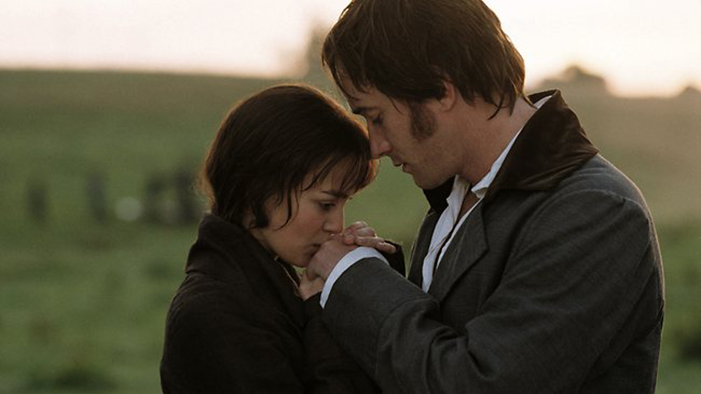Summary
Robert and Mary
When Tee Bob hears Judy Major and the other guests arrive for the party, he leaves. He heads to Mary Agnes's. She is packing to head for New Orleans, as she does each Friday night. Tee Bob appears flushed when he arrives, and Mary Agnes thinks that he has drunk too much. He tells her that he wants to take her to New Orleans that night and give her his name by marrying her. She tells him that he cannot do that. He says that Jimmy Caya called her a n*****, and she says that Jimmy was right. He gets frustrated and says that he only has here. She continues packing, insisting that she is going to New Orleans, but, as she does, something happens between them although it is not clear what.
The scene cuts to Clamp Brown, a young man who lives in the plantation and who currently is waiting to take the bus with Mary Agnes. When he sees Tee Bob leave her house, he goes in. When he finds her on the floor, he collects a nearby woman, Ida, to help. Clamp then runs to the house for Jane.
The Samson House
Jane and Jules Raynard, Tee Bob's godfather, are having a cup of coffee when Tee Bob runs into the house and locks himself in the library. Jane and Raynard have been discussing Tee Bob and Mary. Raynard had reminded Tee Bob the week before that the girl was Black and that love for her in the open would be impossible. When Clamp arrives, Jane refuses to go outside to speak to him (it is raining), so he comes in and tells everyone in the kitchen that Miss LeFarbre has been ravished. Miss Amma Dean and Robert Samson soon appear. Everyone feels confused and panicked. Raynard tells Jane to stay in the house and tells Robert to get Tee Bob out of the library. Miss Amma Dean starts speaking through the door. Robert Samson uses an axe to break it down. When they enter, Tee Bob is sitting in a chair dead with blood on his belly and a letter opener on the floor. Jane sees Raynard grab a letter off the table and shove it in his pocket. Jane and Miss Amma Dean start to pray, and the party is scattered.
Later Raynard says that the letter was to Miss Amma Dean and that Mary Agnes is innocent. Jimmy Caya suddenly reappears and is angry and distressed upon learning of Tee Bob's death. Jimmy blames it on Mary Agnes. Robert Samson then makes a move as if to leave the library, but Raynard stops him. He begs Robert not to follow the lead of the likes of white trash, such as Jimmy, into using violence against Mary Agnes. When Jimmy cries out again for justice, Raynard slaps him and tells Jimmy that Tee Bob's death is his fault. Jimmy explains that he had only explained the rules of society to Tee Bob earlier. When Raynard says that Sheriff Guidry will get Jimmy for his actions, Jimmy starts to cry. Soon after, Sheriff Guidry arrives. Sheriff Guidry eyes everything and everyone and picks up the letter opener. He listens to Jimmy Caya but also treats him disdainfully and quickly sends him home.
The Sheriff and Jules Raynard go down and question Mary Agnes. Jane was not there at the time, but Ida listened through the cracks of the house and later told her what happened. Sheriff Guidry initially hit Mary, but Jules Raynard goaded her to talk by being more gentle. Mary explains that Tee Bob did not rape her, he just pushed her out of the way when she tried to leave the house, and she fell and hit her head. Jules Raynard orders Mary Agnes to leave the plantation that night and leave New Orleans as soon as she could, telling no one what happened and leaving no word of where she is going. He tells Ida to find her a ride to the city. Sheriff Guidry and Jules Raynard return to the big house and speak with Tee Bob's mother and father. The next day the papers say that Tee Bob killed himself, but will not mention anything about Mary Agnes. Later Jules drives Jane home, and she tells him that he is a good man. Jules says that he is not good just because he prevented Mary Agnes from being killed. In fact, he killed Tee Bob just as they all did, even Jane, because of their adherence to their race relations. Tee Bob wanted more out of life, and, when he could not get it, he chose to leave.
Analysis
Jane continues describing events that she does not personally witness in this section. Furthermore, Jane stacks her narrative in a way to create suspense. She could have initially revealed that Tee Bob did not rape Mary Agnes, but she tells the story with dramatic effect so that the entire scenario is not clear until the end. Jane's reliance upon accounts given by members of the community particularly demonstrates that this section of the novel is a communal, and not individual, history.
Thematically, this section cuts to the heart of the social and racial division on the plantation. As the plantation is a representation of the south as a whole, it also provides a clear commentary on general race relations.
Tee Bob kills himself in this chapter because he cannot stand living in a world where race is more important than genuine human emotion. Twice in his life, Tee Bob has lost acquaintances because of race relations. First his constant companion and brother, Timmy, is sent away simply because he is Black. Next, Mary Agnes, the woman that he thinks he loves, is shown as unacceptable. Since there seems to be no place in the world where Tee Bob can live in peace without the issue of race constraining him, he kills himself. As Jules Raynard hypothesizes, Tee Bob likely understood in the moment before his death that the historical legacy of sexual relations between white men and Black women made it impossible for he and Mary Agnes ever to truly love outside of race. This realization of being trapped in the history of southern racism effectively leads to his death.
Jules Raynard appears for the first and last time in this section as a man with considerable insight and perspective. It is Raynard who stops Robert Samson and Jimmy Caya from meting out violence against Mary Agnes in revenge for Tee Bob's death. Raynard knows that Mary Agnes did nothing and that she even rejected Tee Bob, so he takes pains to protect her. Robert Samson's desire for "justice" shows him once again as a figure trapped in the older social order. Ironically, it is this order that led to his son's death. Robert Samson's ridiculous desire to injure the beautiful woman with whom his son fell in love testifies to his lack of understanding about his child. Tee Bob never would have wanted Mary Agnes injured since he loved her. But in the unequal system of southern vigilante justice, Mary Agnes might die simply for attracting Tee Bob. Robert Samson's desire for justice for his lost son seems equally ridiculous when we consider the way in which he dismissed Timmy, his Black son. Now Robert Samson has no sons to carry on his legacy. His racist beliefs have cut him down. First they led him to expel a child from his home, and next they reinforced the social order that was so oppressive that Tee Bob killed himself.
The character of Jimmy Caya again reinforces the classicism within the white race itself. Jules Raynard consistently criticizes Jimmy as coming from a white trash background and is blatantly rude to him. Jimmy did give Tee Bob advice that led Tee Bob to his suicide, but, as Jimmy cogently expresses, he was not the only one. Jules Raynard, in fact, gave Tee Bob similar advice just a week before the party, although likely less crassly expressed. Jimmy starts crying at Raynard's abuses, and one cannot help but feel sorry for him, despite the horrible nature of his racist ideas. The desire to sympathize with Jimmy Caya recalls a similar emotion for Albert Cluveau. Both men hold racist ideas and seem to be completely unacceptable. Still Gaines does not draw them in an entirely negative light. His willingness to see them with compassion suggests that a certain leniency should be given to all people, both white and Black, who find themselves trapped in racist southern ideology. The ability to liberate oneself from the burden of a violent and racist history is difficult and often detrimental, as Tee Bob's death suggests.


 payment page
payment page



